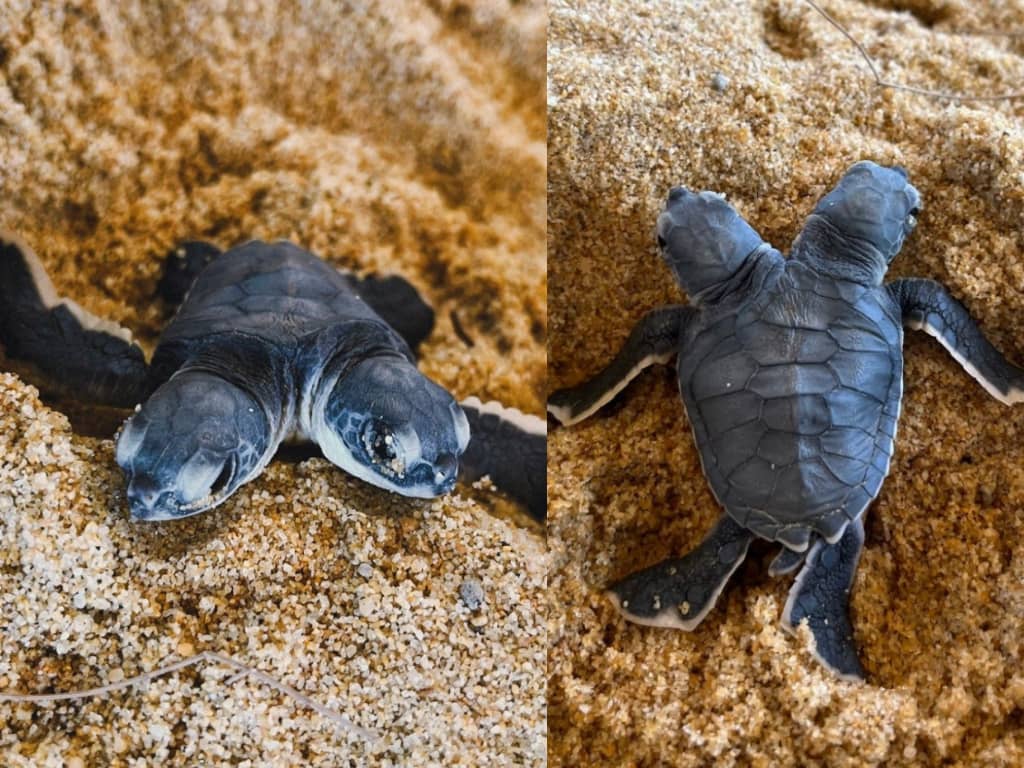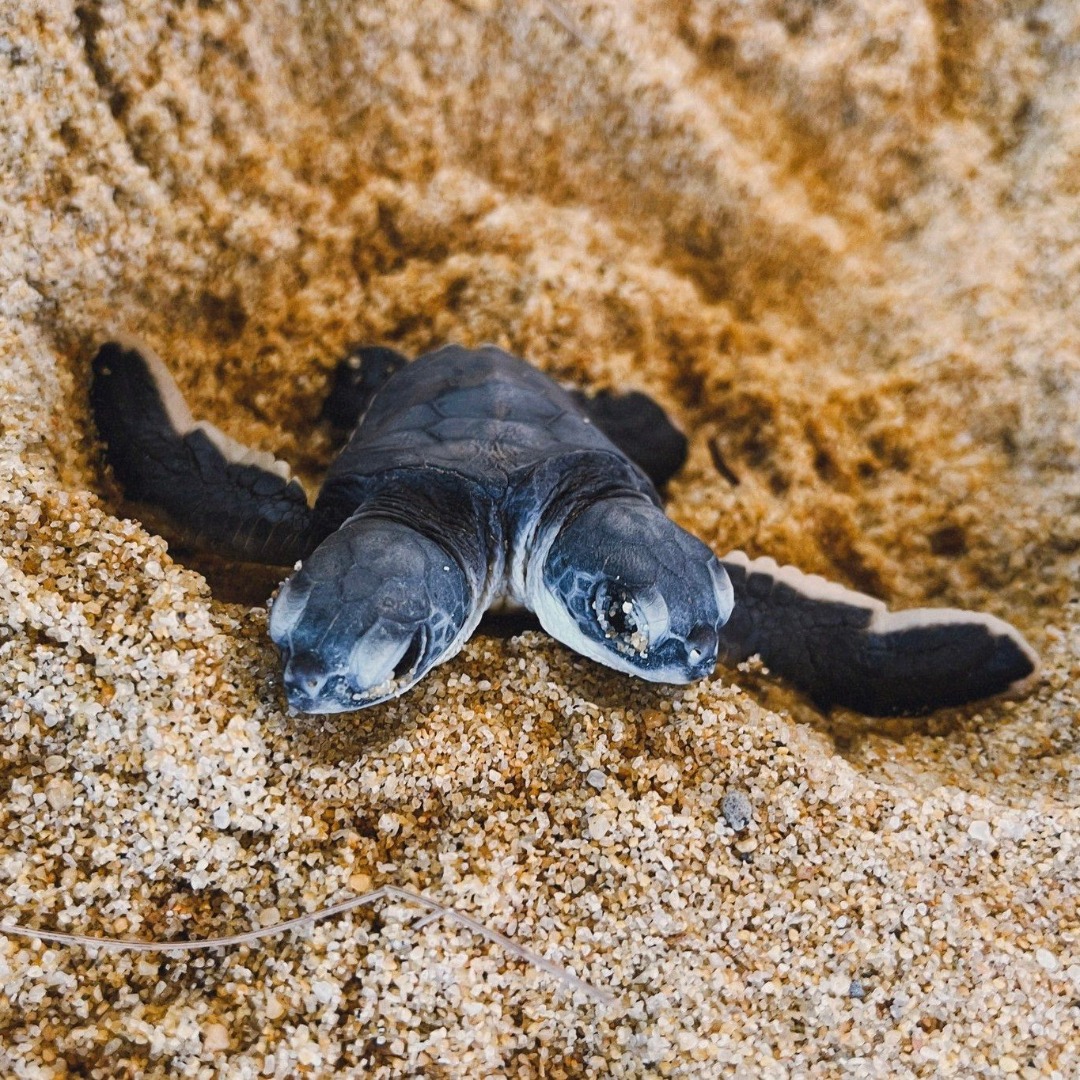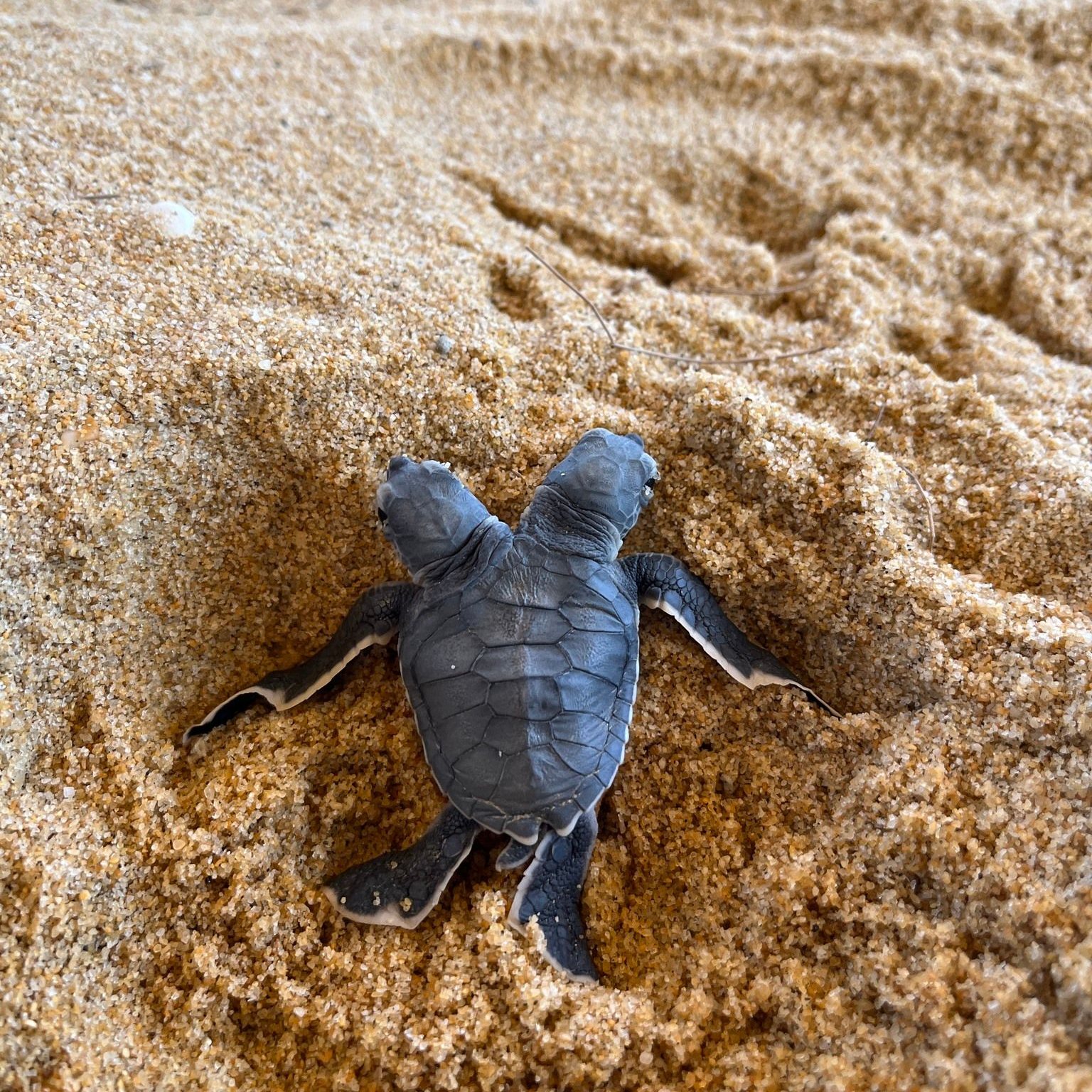“Miracle Birth”: Discovery Of Two-Headed Turtle Hatchling In Terengganu Gains National Attention
 Thirsty for JUICE content? Quench your cravings on our Instagram, TikTok and WhatsApp
Thirsty for JUICE content? Quench your cravings on our Instagram, TikTok and WhatsApp

While being two-faced is mostly frowned upon within the general public, netizens can’t seem to contain their amazement towards the birth of a dicephalic, or two-headed green sea turtle that took place last Tuesday (August 30).
The miracle occurrence was announced on the Lang Tengah Turtle Watch Facebook page, along with almost-unbelievable photos of the tiny reptile.
According to the page, a majority of these rare instances were usually non-viable ones. Almost all cases entailing the birth of two-headed animals saw them living for much shorter periods compared to normal animals of their kind. LTTW site manager Abidah Zaaba also told the Star that at the start, when the team first noticed the hatchling pushing through the sand during a post-emergence inspection at the Tanjong Jara Resort project site, the team assumed that it was a normal turtle.
She asserted that the nest housed 110 eggs, and a post-emergence evaluation revealed that 89 had hatched, and that while another two-headed turtle was found at the hatchery, which launched in 2016, this was the first time a live one was discovered.
Observations by the team also uncovered other interesting findings, such as:

In line with that, Sharum Yusof, director of the Rantau Abang Fisheries Research Institute (FRI), while regular hatchlings are transferred into the sea said that “extraordinary finds like a two-headed turtle must be surrendered to the relevant parties for nurturing.”
“Although the turtle’s voluntary movement coordination was misaligned, the right head was clearly dominant; and because the facial scales on each head differ, they can be recognised as different individuals using a photo identification method,” he added.
He also stated that the FRI was informed of the discovery and that the turtle is now with the Department of Fisheries’ Turtle Conservation and Information Centre (TCIC) in Rantau Abang (DOF), just 15 minutes away from their project site, allowing them to keep tabs on the hatchling with ease.


 Get Audio+
Get Audio+ Hot FM
Hot FM Kool 101
Kool 101 Eight FM
Eight FM Fly FM
Fly FM Molek FM
Molek FM
